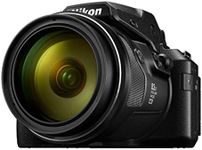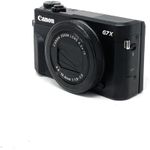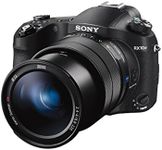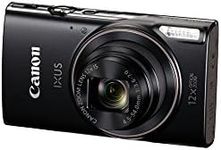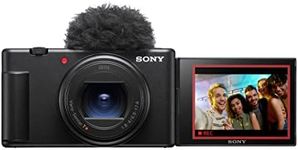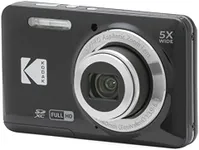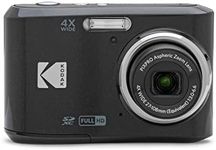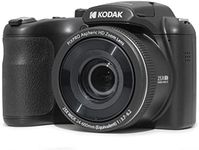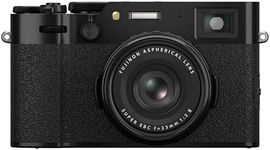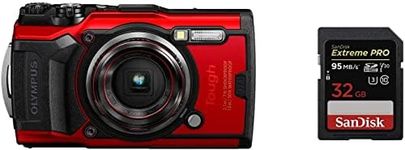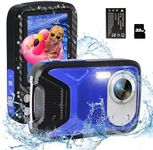Buying Guide for the Best Point And Shoot Camera
When choosing a point-and-shoot camera, it's important to consider what you'll primarily be using it for. These cameras are designed for ease of use, portability, and convenience, making them ideal for casual photography, travel, and everyday moments. Understanding the key specifications will help you select a camera that best fits your needs, whether you're looking for high-quality images, ease of use, or specific features like zoom capabilities or connectivity options.MegapixelsMegapixels refer to the resolution of the camera's sensor, determining how much detail the camera can capture. More megapixels mean higher resolution images, which is important if you plan to print large photos or crop images without losing quality. For most casual photographers, a camera with 12 to 20 megapixels is sufficient. If you need to print large photos or want more detail, consider a camera with more than 20 megapixels.
Zoom RangeThe zoom range of a camera indicates how much you can magnify the subject. Optical zoom is more important than digital zoom, as it uses the camera's lens to bring the subject closer without losing image quality. A higher optical zoom range is beneficial for capturing distant subjects, such as wildlife or sports events. If you often photograph subjects from afar, look for a camera with at least 10x optical zoom. For everyday use, a 3x to 5x optical zoom is usually adequate.
Sensor SizeSensor size affects the camera's ability to capture light and detail, impacting image quality, especially in low-light conditions. Larger sensors generally produce better images with less noise. Common sensor sizes in point-and-shoot cameras include 1/2.3-inch, 1-inch, and APS-C. If you prioritize image quality and low-light performance, opt for a camera with a larger sensor. For general use, a 1/2.3-inch sensor is often sufficient.
Image StabilizationImage stabilization helps reduce blur caused by camera shake, which is especially useful in low-light conditions or when using high zoom levels. There are two types: optical and digital. Optical stabilization is generally more effective as it physically adjusts the lens or sensor. If you often shoot in challenging conditions or without a tripod, look for a camera with optical image stabilization to ensure sharper images.
Video CapabilityMany point-and-shoot cameras offer video recording features, with resolutions ranging from HD (720p) to 4K. Higher resolution videos provide more detail and clarity, which is important if you plan to watch your videos on large screens or edit them. If video quality is a priority, consider a camera that offers at least Full HD (1080p) recording. For casual video recording, HD resolution may suffice.
ConnectivityConnectivity options like Wi-Fi, Bluetooth, and NFC allow you to easily transfer photos and videos to other devices or share them online. This is particularly useful for those who want to quickly upload images to social media or back them up to cloud storage. If you value convenience and quick sharing, look for a camera with built-in Wi-Fi or Bluetooth. For those who prefer traditional methods, a USB connection may be sufficient.
Battery LifeBattery life determines how long you can use the camera before needing to recharge or replace the battery. It's measured in the number of shots per charge. If you plan to use the camera for extended periods, such as during travel or events, a longer battery life is beneficial. Look for a camera that offers at least 200-300 shots per charge for general use. For more intensive use, consider models with higher battery capacities or the option to use spare batteries.
